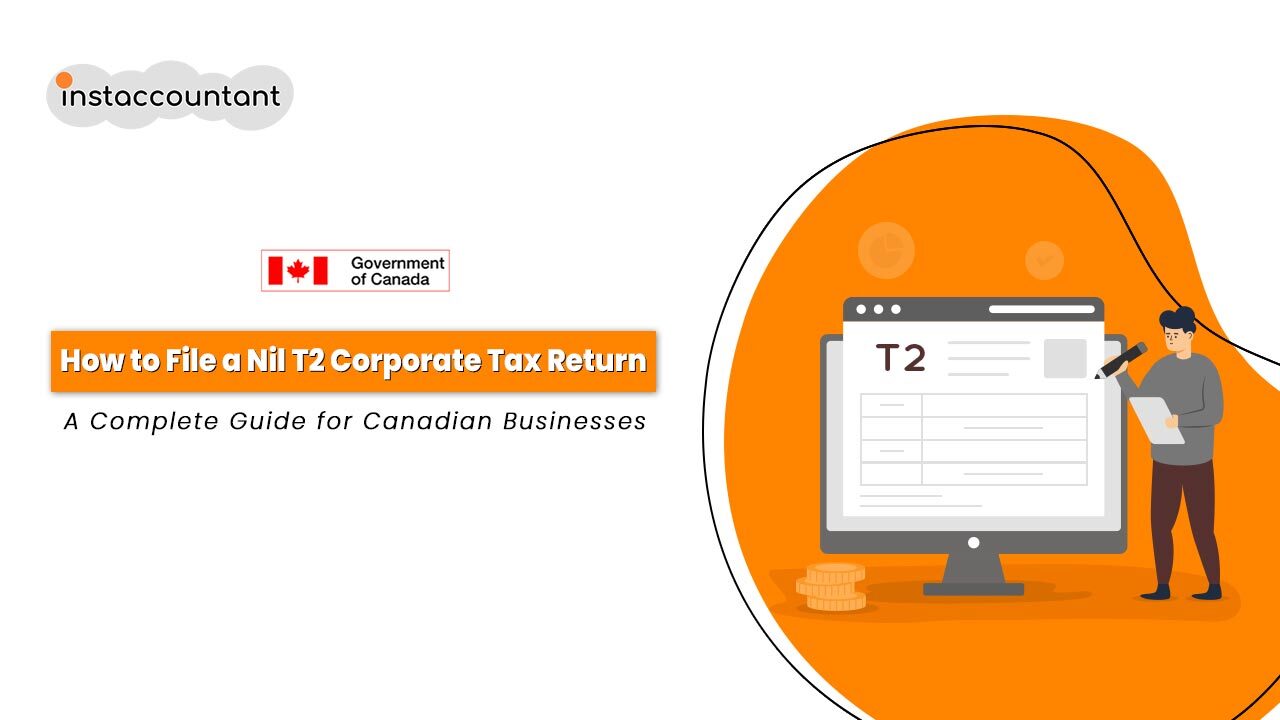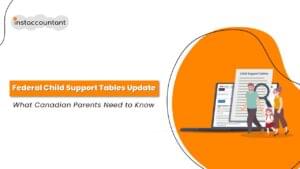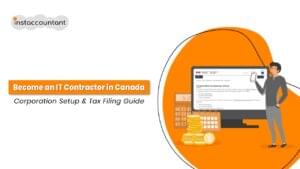Whether you’re a savvy freelance IT consultant thriving in Vancouver, an early-stage tech startup founder building big dreams in Montreal, or simply managing an inactive corporation in Toronto, one truth remains: your Canadian corporation must file a T2 corporate income tax return, even if your business generated absolutely zero dollars last year.
You might be thinking, “No income, no taxes, no need to file, right?” Think again.
Even without business activity, the Canada Revenue Agency (CRA) requires every corporation to file a T2 Nil Return. Let’s cut through the jargon and break down exactly what you need to know to keep your business penalty-free and in good standing with the CRA.
What Exactly Is a T2 Nil Return?
A T2 Nil Return (officially, often referred to as a T2 Short Return for eligible corporations) is a simplified version of the standard T2 Corporate Income Tax Return. It’s specifically designed for corporations that had no income, no expenses, and absolutely no activity during their fiscal year. Imagine it as a polite, formal “check-in” with the CRA, letting them know: “Nothing happened, but we’re still here, and we’re compliant!”
The CRA mandates that all resident Canadian corporations file a T2 Corporation Income Tax Return every single tax year, regardless of their activity level. This rule applies to any business legally incorporated in Canada (ending with Inc., Ltd., or Co.), even if it’s currently dormant corporation or not generating revenue.
The only exceptions to this steadfast rule are a few specific entities like tax-exempt Crown corporations, Hutterite colonies, and most registered charities.
This isn’t just a suggestion; it’s absolutely mandatory for every incorporated business across Canada, from a burgeoning tech startup in Calgary to a local plumber in Edmonton. Even if your company is completely inactive corporation or recorded zero revenue, filing a T2 Nil Return is your golden ticket to maintaining CRA compliance and critically, avoiding penalties that could easily run into the thousands.
Who Must File a T2 Nil Return for a Corporation
If you’re incorporated in Canada and your business:
- Had no revenue
- Had no expenses
- Did not operate during the year
…then yes, you must file a T2 Nil Return to stay compliant.
This commonly includes:
- Dormant or paused corporations (e.g., you’re taking a break from business)
- Startups not yet launched (still in the planning phase, but incorporated)
- Holding companies with no activity (simply holding assets, not actively trading)
- Incorporated freelancers or consultants with no income during a specific period.
If your business had any transactions, even just one tiny expense, you might still qualify for a “zero return,” but not a true Nil Return. Don’t worry! Understanding the difference is key, and we can help clarify which one fits your unique situation.
T2 Nil Return vs. T2 Zero Return: Key Differences
You’ve probably heard “nil return” and “zero return” used interchangeably, but there’s a subtle yet important distinction:
- Nil Return: This is the official and correct term (often referring to the T2 Short Return) used by the CRA. It’s specifically for corporations that have no income, no expenses, and no activity whatsoever for the fiscal year. It’s typically used by Canadian-controlled private corporations (CCPCs) that don’t have complex tax situations, foreign ownership, or certain credits. It’s a formal declaration that your business was inactive but compliant.
- Zero Return: This is more of a colloquial or informal term, not officially used by the CRA. A T2 “Zero Return” means your corporation did have some activity (e.g., expenses), but your taxable income ultimately ended up being $0 (perhaps due to deductions, expenses, or credits offsetting any revenue).
If your business was completely inactive, you’ll most likely file a T2 Short Return, which is the CRA’s simplified form for a true Nil Return for small corporations.
Why Filing a T2 Corporate Return Every Year Is Required
For years, small corporations with no income could simply submit a paper T2 Nil Return. It was straightforward and didn’t cost a fortune. But that landscape has changed!
As of tax years starting after January 1, 2024, the CRA now requires nearly all corporations to file their T2 returns electronically and yes, this includes T2 Nil Returns.
If your corporation is required to file electronically and you send a paper T2 return (including a nil return), the CRA can impose a $1,000 penalty for non-compliance. The CRA actively tracks your corporation’s status through these T2 filings. Even if your business is inactive or dormant, these electronic filings confirm its continued existence and compliance.
T2 Nil Return Filing Deadlines for Canadian Corporations
Just like a regular T2, your T2 Nil Return deadline is six months after your corporation’s fiscal year-end. Knowing your specific fiscal year-end date is absolutely crucial.
Here are some common examples to help you stay on track:
| Fiscal Year-End | T2 Due Date |
| Dec 31, 2024 | Jun 30, 2025 |
| Mar 31, 2025 | Sep 30, 2025 |
| Jun 30, 2025 | Dec 31, 2025 |
While the filing deadline is six months after year-end, any taxes owed (not applicable for a true nil return) are typically due earlier – usually two or three months after year-end. With a nil return, your primary focus is simply meeting that filing deadline to avoid the penalties. If you’re unsure of your corporation’s fiscal year-end, check your Articles of Incorporation or, even better, consult with a trusted tax professional.
What Happens If You Don’t File Your T2 Corporate Tax Return
Not filing taxes for your inactive corporation in Canada can lead to some surprisingly serious consequences:
- Penalties and Interest: The CRA doesn’t mess around. They impose penalties for late or non-filed tax returns, even if your business has no income to report or tax payable. This is known as the ITA 162(7) penalty, which is $25 per day, up to a maximum of $2,500. If you’ve missed filing, they’ll typically send a letter urging you to file your T2 return. Ignoring these letters can quickly escalate to these hefty penalties and the start of the collection process. (And yes, if you’re in Alberta or Quebec and have provincial corporate tax obligations, additional penalties could apply.)
- Arbitrary Assessments: Beyond penalties, the CRA (and Revenu Québec for Quebec-based corporations) can establish an estimated amount of taxes a corporation owes and issue a notice of assessment for this amount. This estimate is based on any information they have on file, like previous tax returns, banking data, or industry benchmarks. The higher the estimated amount, the quicker the collection process may begin, potentially even including freezing your corporation’s assets and bank accounts! The good news is that these arbitrary assessments can be reversed once your corporation files its actual T2 return for the year.
- Administrative Dissolution: Continuous non-compliance can result in your business being classified as permanently inactive, potentially leading to administrative involuntary dissolution. This means your business could be struck off the register, making it incredibly difficult to revive or conduct any future business activities under that corporate name. It’s like your business simply vanishes from the legal landscape.
Steps to Filing a T2 Nil Corporate Tax Return in Canada
Filing a nil corporate tax return in Canada when your business has had no activity can be a remarkably straightforward process. By following these simple steps, you can handle it hassle-free:
- Ensure Your Fiscal Period is Aligned: It’s crucial to have your fiscal period align with the tax year set by the CRA. While the tax year for individuals runs from January 1st to December 31st, corporations can choose different fiscal year-ends. Make sure you know yours and that it’s consistent. If you’re unsure or need assistance in aligning it, a reputable accounting firm or corporate tax service can provide invaluable guidance.
- Gather the Required Documents (Even If They’re Empty!): Even for a nil return, having your corporation’s basic information handy is essential. This typically includes your corporation’s name, business number (BN), fiscal year-end, and details of your authorized signing officer. If you’ve had any activity in previous years, having your previous year’s tax return on hand can provide context.
- Complete the T2 Short Return Form: When filing a nil corporate tax return in Canada, you primarily use the T2 Short Return form. This form is specifically designed for small businesses and corporations with no activity or income to report. It’s a simplified version of the standard T2 form and requires less information. The T2 Short Return form effectively informs the CRA that your business had no taxable income for the year. You can generally find this form on the CRA website.
- Submit Your Tax Return Electronically (The Mandatory Part!): Once you have completed the T2 Short Return form and ensured all the necessary information is included, it’s time to submit your tax return to the CRA. Remember, for tax years starting after January 1, 2024, electronic filing is now mandatory for most corporations, including nil returns. The return should be signed by an authorized signing officer of the corporation, typically the business owner or a designated individual. Make sure to review everything for accuracy before submitting through the CRA’s online portal or approved tax software.
How to Stay CRA-Compliant Beyond Your T2 Filing
While filing your T2 nil corporate return is essential, remember that CRA compliance often extends beyond just income tax. If your corporation has other CRA accounts open, such as a GST/HST account or a payroll account, you may need to file separate nil returns for those as well, even if there was no activity. For example, if you’re registered for GST/HST, you’ll still need to file your GST/HST returns (even if they report zero activity) according to your assigned filing frequency to avoid penalties.





2 Responses
As a previous small corporation owner, I suggest you do not need to file an annual return if there is no bank account in the corporations name any longer.
Comments?
No, that is incorrect. Corporations must file a T2 return annually until officially dissolved.